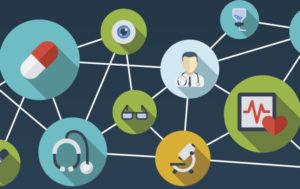
The National Institute on Minority Health and Health Disparities (NIMHD) will be using the Biostrap wearable device to learn more about the long-term effects of COVID-19. The organization’s Intramural Research Division will be conducting a study with 550 volunteers, all of whom will have tested positive for COVID-19 in the five days prior to enrolment.
Once registered, the volunteers will be outfitted with Biostrap wristbands that can track a number of different health metrics, including heart rate, respiration, and oxygen levels. That data will then be consolidated and analyzed with Biostrap’s remote patient monitoring program to gain a better sense of the ongoing impact that COVID-19 can have after the initial infection has run its course.
In that regard, Biostrap and the NIMHD noted that healthcare providers do not yet have a strong understanding of the long term side-effects of COVID-19. They know that the disease can have lasting consequences, but have thus far only been able to collect data in a more limited clinical inpatient setting. The Biostrap will give doctors access to high-quality health data in real time, and allow them to monitor the progression of the disease beyond the hospital.
The eventual goal is to use that information to figure out why some people experience more severe symptoms than others, and to treat the disease accordingly. It will also help doctors understand why the disease seems to have had a disproportionate impact on certain populations, with the researchers observing that American Indians and Native Alaskans had much higher rates of infection than white Americans.
“There are still many uncertainties about the late effects of COVID-19 and symptoms still seem diffused and vary from case to case,” said Biostrap Chief Medical Officer Willem Gielen. “By collecting biometric data over a longer period of time with a clinical-grade biometric sensor, scientists can gather valuable insights about the subsequent course of COVID-19 in a scalable and non-interfering manner and can provide future assistance in an inclusive manner.”
Volunteers will be registered on a rolling basis, and must speak English and own an iOS or Android device in order to participate. The final study will be completed on April 1, 2025, though the data for a preliminary report will be gathered by January 31, 2022.
In March, Biostrap CEO Sameer Sontakey shared his own personal Biostrap data to show how the wristband alerted him to his own COVID-19 infection. The Oura Ring and the Fitbit are some of the other wearables that have been used to detect COVID-19 symptoms.
–
(Originally posted on FindBiometrics)

Follow Us